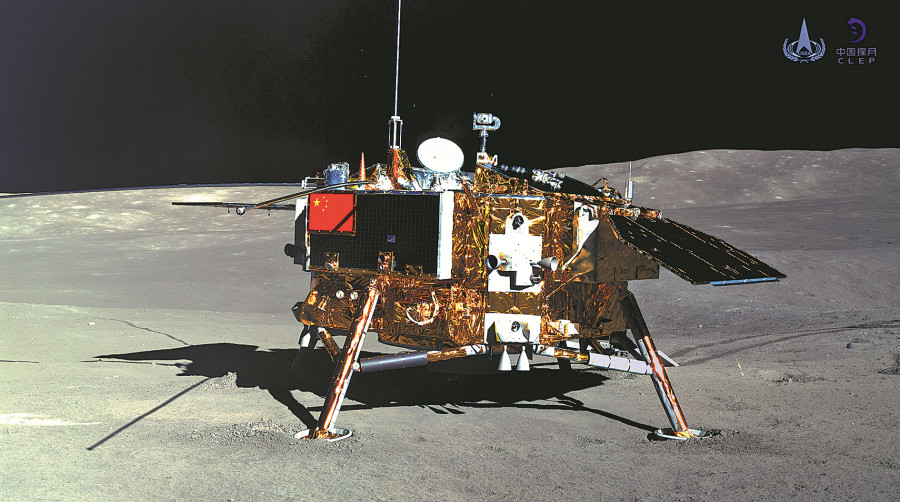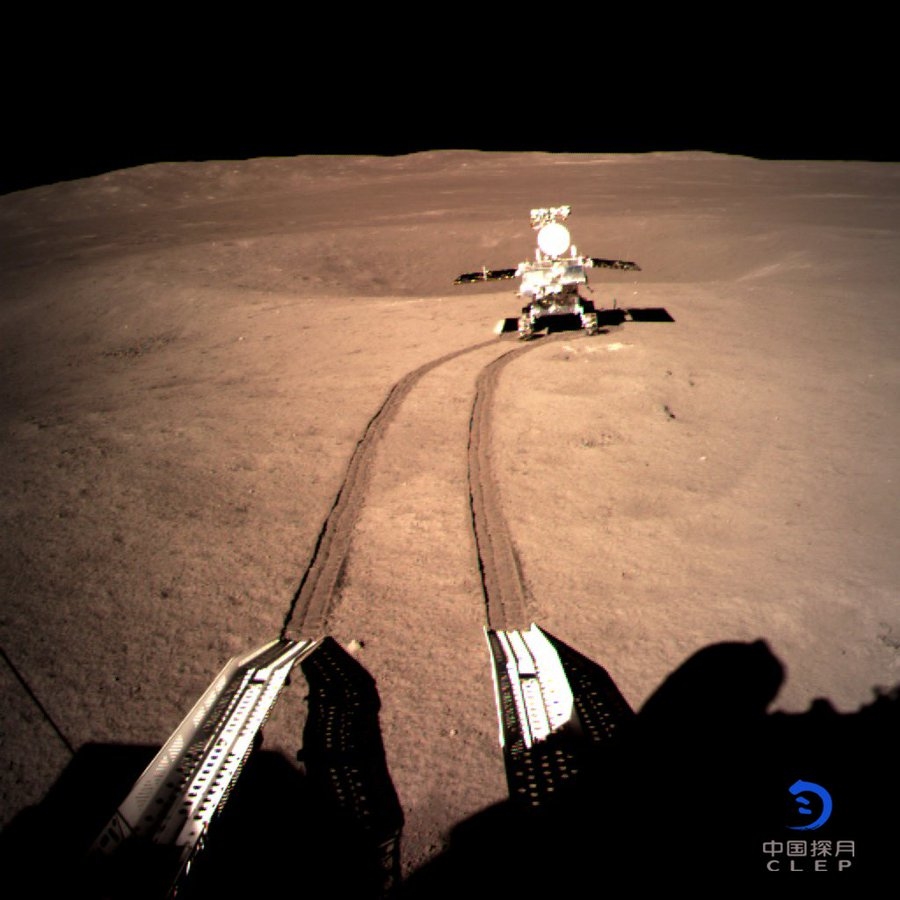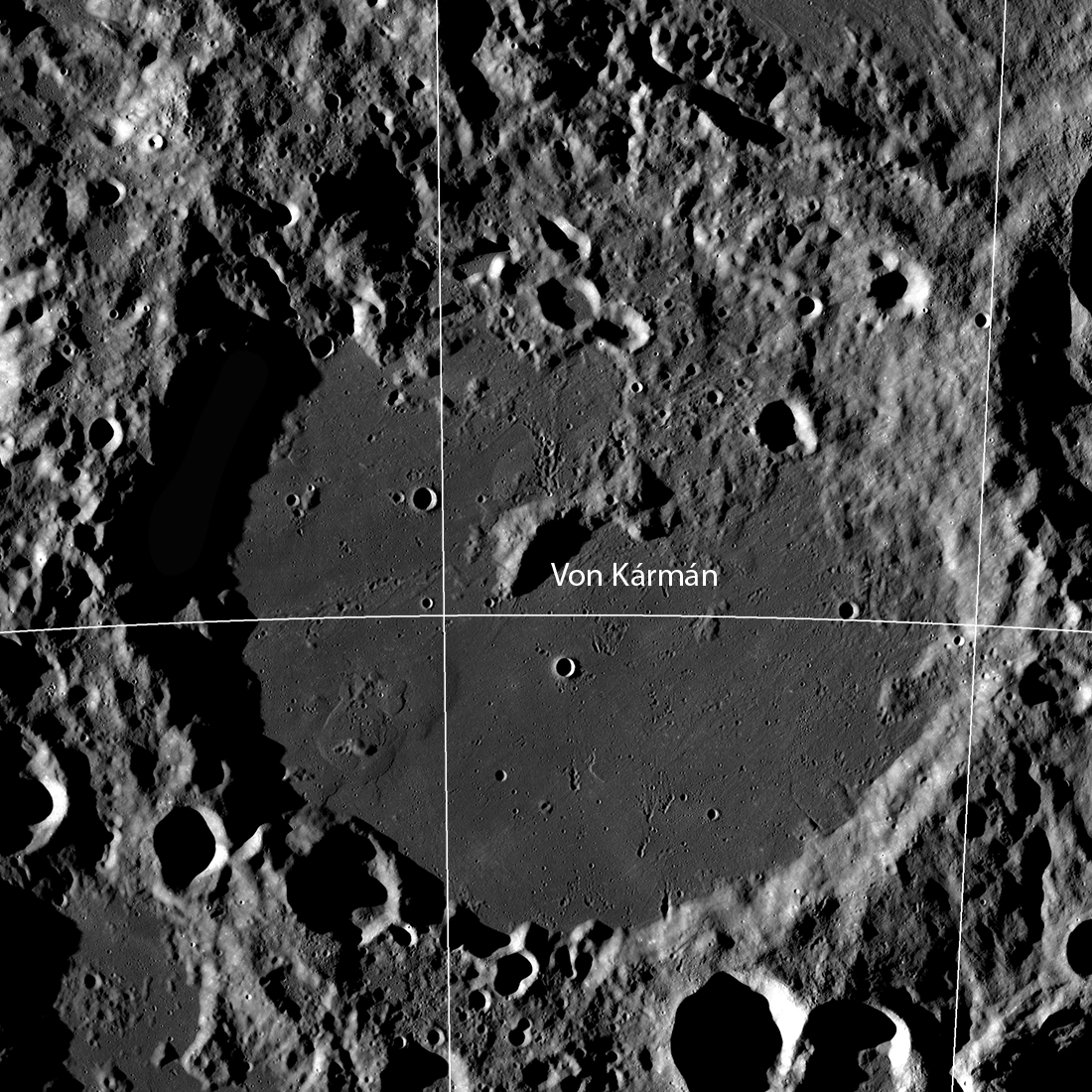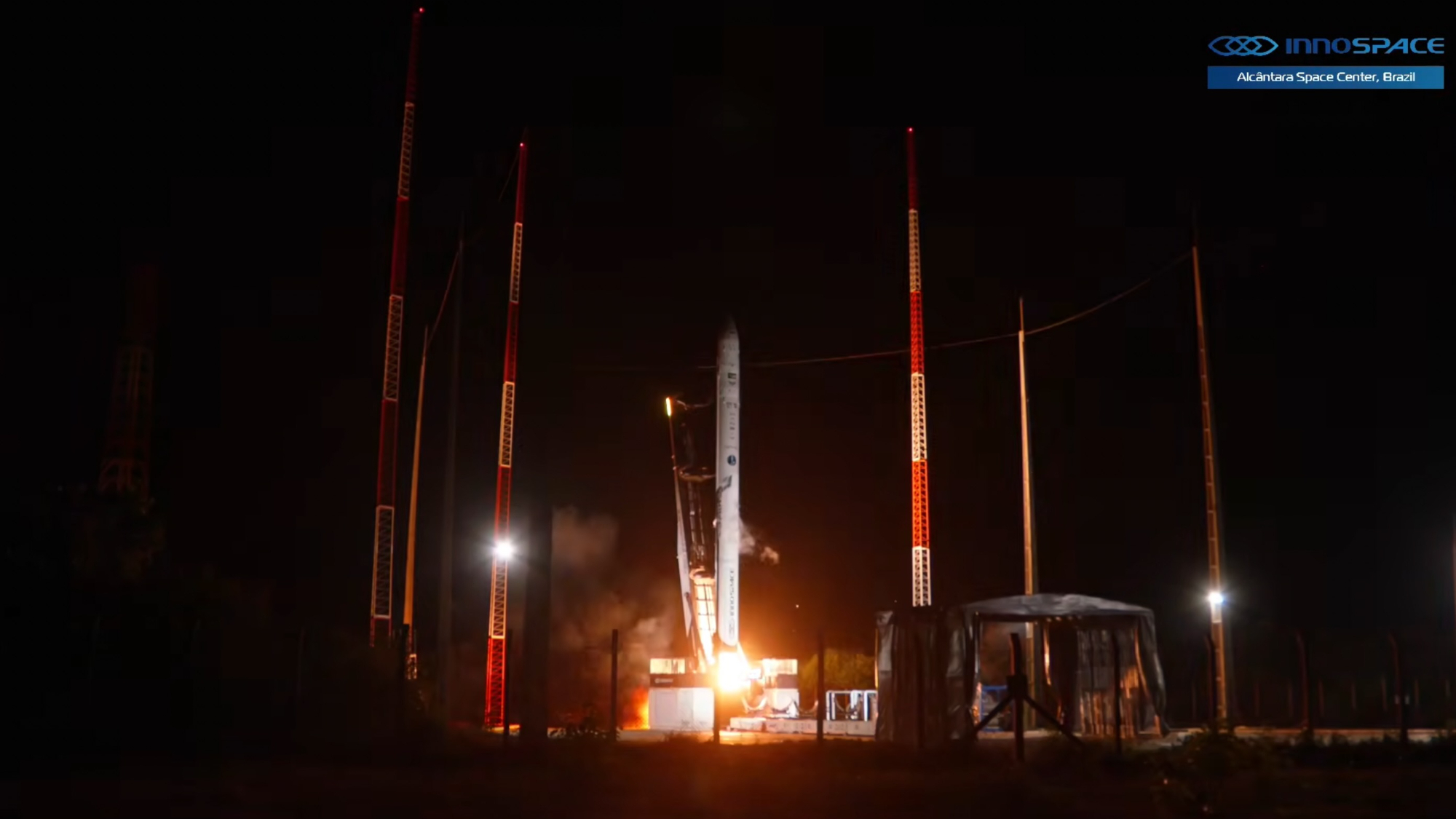Chinese Rover and Lander Survive 1st Frigid Night on Moon's Far Side

China's Chang'e 4 lander and rover are in good shape following a cold spell on the moon. They were put to sleep as night fell roughly two weeks ago at the mission's Von Kármán Crater landing site.
The China National Space Administration (CNSA) announced on Thursday (Jan. 31) that the lander and rover both survived their first trial by ice. The rover, Yutu 2 ("Jade Rabbit 2"), woke up at about 7:00 a.m. EST (8:00 p.m. China time) Tuesday (Jan. 29), and the lander followed suit 24 hours later, CNSA officials said.
A lunar day equals 14 days on Earth, and a lunar night is the same length. [Photos from the Moon's Far Side! China's Chang'e 4 Lunar Landing in Pictures]
Relay satellite connection
CNSA officials also noted that communication and data transmission between mission control on Earth and the farside hardware via the relay satellite Queqiao ("Magpie Bridge") are stable.
Both the lander and the rover came out of dormant mode automatically, waking up after noting the elevation angle of the sunlight now available at Von Kármán Crater, which is part of the huge South Pole-Aitken Basin. Furthermore, key instruments have started to work again, mission officials said.
Presently, the rover is located about 60 feet (18 meters) northwest of the lander.
Farside temps
"According to the measurements of Chang'e 4, the temperature of the shallow layer of the lunar soil on the far side of the moon is lower than the data obtained by the U.S. Apollo mission on the near side of the moon," said Zhang He, executive director of the Chang'e 4 probe project, from the China Academy of Space Technology (CAST), according to China's state-run Xinhua news agency.
Breaking space news, the latest updates on rocket launches, skywatching events and more!
"That's probably due to the difference in lunar soil composition between the two sides of the moon. We still need more careful analysis," Zhang added.
The lander and rover are outfitted with a radioisotope heat source.
The lander also carries an isotope thermoelectric cell and dozens of temperature data collectors to measure the temperatures on the surface of the moon during the lunar night, the Xinhua story notes.
This gear's data reveal that the lander experienced temperatures as low as minus 310 degrees Fahrenheit (minus 190 degrees Celsius) during its first lunar night, China's Global Television Network (CGTN) reported.
You can learn more in this CCTV News Agency video.
Leonard David is author of the forthcoming book, "Moon Rush: The New Space Race" to be published by National Geographic in May 2019. A longtime writer for Space.com, David has been reporting on the space industry for more than five decades. Follow us @Spacedotcom or Facebook. This version of the story published on Space.com.

Leonard David is an award-winning space journalist who has been reporting on space activities for more than 50 years. Currently writing as Space.com's Space Insider Columnist among his other projects, Leonard has authored numerous books on space exploration, Mars missions and more, with his latest being "Moon Rush: The New Space Race" published in 2019 by National Geographic. He also wrote "Mars: Our Future on the Red Planet" released in 2016 by National Geographic. Leonard has served as a correspondent for SpaceNews, Scientific American and Aerospace America for the AIAA. He has received many awards, including the first Ordway Award for Sustained Excellence in Spaceflight History in 2015 at the AAS Wernher von Braun Memorial Symposium. You can find out Leonard's latest project at his website and on Twitter.



